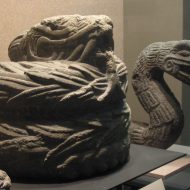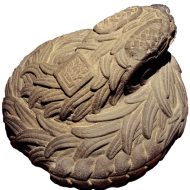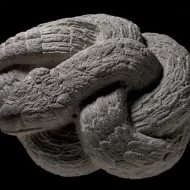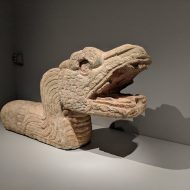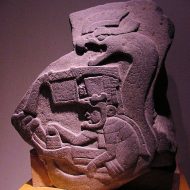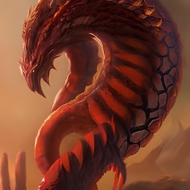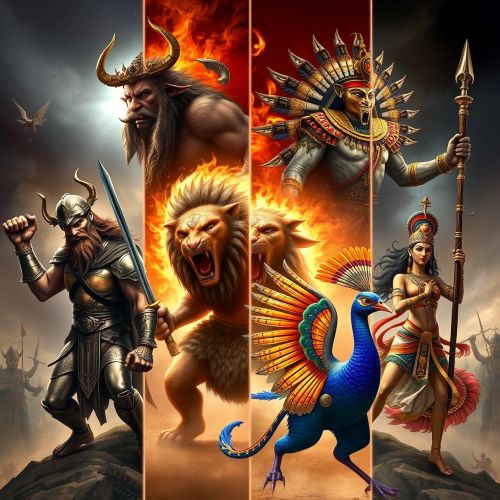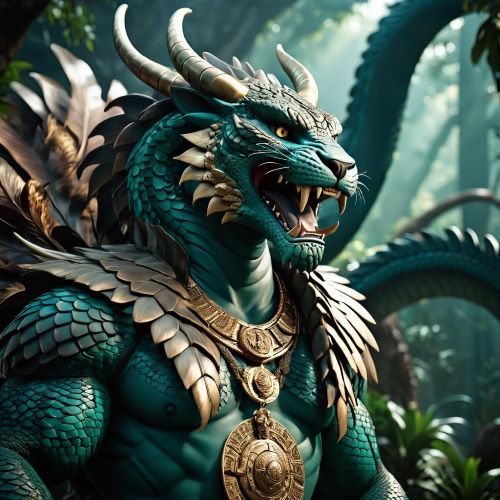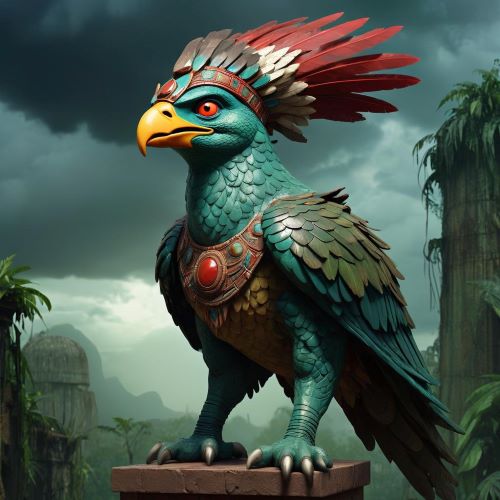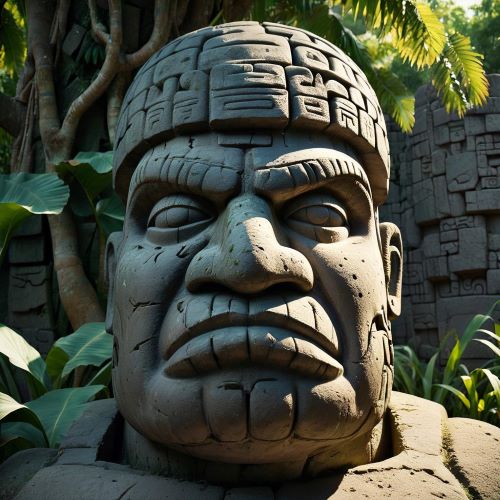Olmec Feathered Serpent : The Original
Listen
At a glance
| Description | |
|---|---|
| Origin | Olmec Mythology |
| Classification | Gods |
| Family Members | N/A |
| Region | Mexico |
| Associated With | N/A |
Olmec Feathered Serpent
Introduction
The feathered serpent is a type of rattlesnake that can be described as either a rattlesnake or a snake with feathers on its head. It is not very common in Olmec art, though one notable example is the Monument 19 from La Venta, which shows a feathered serpent. Later versions of this creature, such as the Kukulkan and Quetzalcoatl, were more significant in Aztec and Maya culture. Despite its importance, this is still considered to be an important ancestor of the feathered serpents in Mesoamerican religion.
Physical Traits
Many of the surviving works of art from the Olme show the feathered serpent as a crested rattlesnake that usually has feathers covering its body. It is believed that these supernatural entities were the forerunners of Mesoamerican deities. Despite the importance of these animals, experts do not agree about their significance to the Olme.
Family
In his 2004 book, The Olmecs, author David Diehl states that the various works of art from the region suggest that the feathered serpent was a minor deity in the group of gods. However, he noted that the monument shown in La Venta, which is the ancestor of the feathered serpent, played a significant role in the development of post-formative societies.
Other names
The Feathered Serpent was a prominent supernatural entity or deity, found in many Mesoamerican religions. It was called Quetzalcoatl among the Aztecs, Kukulkan among the Yucatec Maya, and Q’uq’umatz and Tohil among the K’iche’ Maya.
Powers and Abilities
Early depictions of the feathered serpent in Mesoamerica have been widely distributed throughout the region, which can be used to test the interaction between people. However, it is not clear if all of the specimens found in the archaeology record are feathered.
It is believed that the feathered serpent was associated with the sky, earth, and space due to its dual nature, which includes the presence of both bird and serpent imagery. Some studies also claim that this animal was linked to religious and human sacrifice.
Modern Day Influence
The presence of the feathered serpent or the avian snake in Olmec history and the pantheon is the crux of the research being carried out even today by experts to understand more details of the Olmec civilization.
Related Images
Frequently Asked Questions
Who is the feathered serpent Olmec gods?
The feathered serpent represents a large rattlesnake covered with feathers, sometimes with a crest or other attributes. It is related to life and the wind, and may have been associated with fertility and creation. The feathered serpent may have been called Kukulkan in the Olmec language, although this name is more commonly known from later Maya culture
What is the story of the feathered serpent?
The story of the feathered serpent in Olmec history is not very clear, as there is no surviving direct account of the Olmec’s religious beliefs. The feathered serpent was a motif or symbol that appeared in Olmec art and iconography, dating back to around 1400 BC. The feathered serpent may have also been related to the creation of the world and humanity, as some scholars suggest that it represents the axis mundi or world tree that connects the three levels of the cosmos: the sky, the earth and the underworld. The feathered serpent appears on La Venta Stele 19 (the earliest known representation of a feathered serpent in Mesoamerica) and within a Juxtlahuaca cave painting, among other locations. It is believed that the Olmec feathered serpent was the forerunner of many later Mesoamerican deities, such as Quetzalcoatl among the Aztecs and Kukulkan among the Maya.
What was the feathered serpent known for?
In Olmec culture (c. 1400-400 BC), the feathered serpent may have been called Kukulkan and may have been associated with life and the wind. The feathered serpent may have also been related to the creation of the world and humanity, as it may have represented the axis mundi or world tree that connects the three levels of the cosmos.
Is the feathered serpent god real?
The feathered serpent was a real symbol and concept that was used by many ancient Mesoamerican cultures to represent a supernatural entity or deity that they revered and worshipped. The feathered serpent was also a real phenomenon that could be observed in nature, such as the quetzal bird and the rattlesnake, or in astronomy, such as the planet Venus. However, whether the feathered serpent was a real god or not depends on one’s definition of god and one’s faith in the myths and legends that describe the feathered serpent’s actions and attributes.

